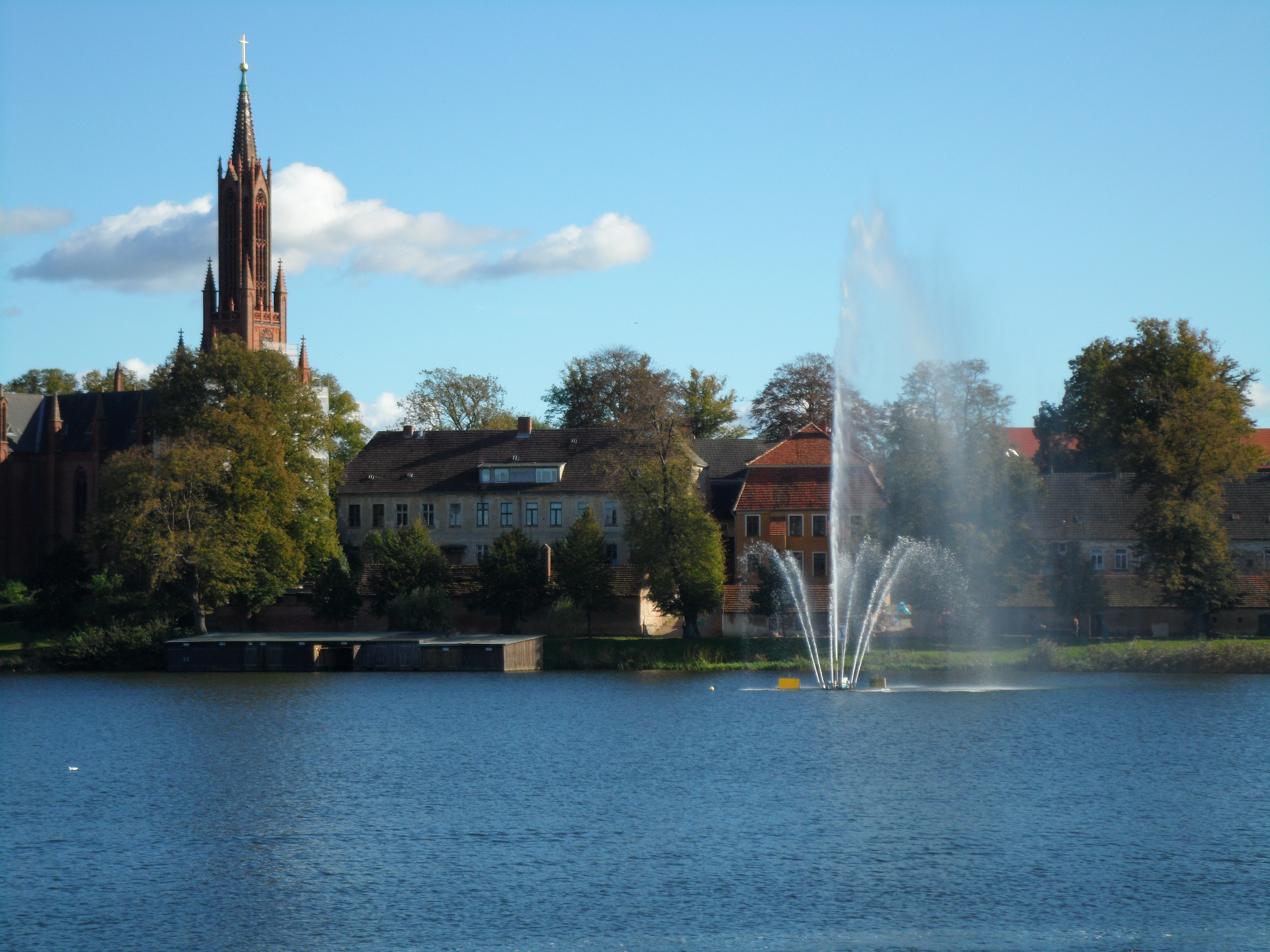Malchow (Mecklenburg) on:
[Wikipedia]
[Google]
[Amazon]
Malchow () is a
 In 1298, Malchow Abbey, a
In 1298, Malchow Abbey, a  After the reunification of Germany in 1990, the historic town center of Malchow was extensively restored. Today the former Cistercian abbey houses the Mecklenburg Organ Museum.
After the reunification of Germany in 1990, the historic town center of Malchow was extensively restored. Today the former Cistercian abbey houses the Mecklenburg Organ Museum.
municipality
A municipality is usually a single administrative division having municipal corporation, corporate status and powers of self-government or jurisdiction as granted by national and regional laws to which it is subordinate.
The term ''municipality' ...
in the Mecklenburgische Seenplatte district, in Mecklenburg-Western Pomerania
Mecklenburg-Vorpommern (MV; ; ), also known by its anglicized name Mecklenburg–Western Pomerania, is a state in the north-east of Germany. Of the country's sixteen states, Mecklenburg-Vorpommern ranks 14th in population; it covers an are ...
, Germany
Germany, officially the Federal Republic of Germany, is a country in Central Europe. It lies between the Baltic Sea and the North Sea to the north and the Alps to the south. Its sixteen States of Germany, constituent states have a total popu ...
.
Geography
It is situated on the riverElde
The Elde () is a river in northern Germany (Mecklenburg-Vorpommern and a few km in Brandenburg), a right tributary of the Elbe. Its total length is . The Elde originates near Altenhof, south of Malchow. It first flows southeast towards the south ...
, 25,5 km west of Waren, and 35 km north of Wittstock
Wittstock/Dosse is a town in the Ostprignitz-Ruppin district, in north-western Brandenburg, Germany.
Geography
It is located in the eastern Prignitz region on the Dosse River near the confluence with its Glinze tributary, about east of Prit ...
.
History
The site of Malchow was a center forSlavic paganism
Slavic paganism, Slavic mythology, or Slavic religion refer to the religious beliefs, myths, and ritual practices of the Slavs before Christianisation, which occurred at various stages between the 8th and the 13th century.
The South Slavs, who ...
during the Middle Ages
In the history of Europe, the Middle Ages or medieval period lasted approximately from the 5th to the late 15th centuries, similarly to the post-classical period of global history. It began with the fall of the Western Roman Empire and ...
. It was sacked by Saxons
The Saxons, sometimes called the Old Saxons or Continental Saxons, were a Germanic people of early medieval "Old" Saxony () which became a Carolingian " stem duchy" in 804, in what is now northern Germany. Many of their neighbours were, like th ...
during the 1147 Wendish Crusade
The Wendish Crusade () was a military campaign in 1147, one of the Northern Crusades, led primarily by the Kingdom of Germany within the Holy Roman Empire and directed against the Polabian Slavs (or "Wends"). The Wends were made up of the Slavic ...
against the Polabian Slavs
Polabian Slavs, also known as Elbe Slavs
and more broadly as Wends, is a collective term applied to a number of Lechites, Lechitic (West Slavs, West Slavic) tribes who lived scattered along the Elbe river in what is today eastern Germany. The ...
.
The German town of Malchow, founded on an island between the Plauer See (Lake) and Fleesensee, was first mentioned in writing in 1147 and received a town charter under Schwerin Law in 1235.
Cistercian nunnery
Cistercian nuns are female members of the Cistercian Order, a religious order of the Catholic Church.
History
The Cistercian Order was initially a male order. Cistercian female monasteries began to appear by 1125. The first Cistercian monastery ...
, moved to the south shore of Lake Malchow, opposite the island. Over several following centuries, the town expanded to the mainland in the northwest, to which the original settlement was linked by a succession of bridges, and gradually this mainland settlement came to predominate.
A munitions factory of the Alfred Nobel Co. was established in Malchow in 1938, during the Nazi period, and during World War II hundreds of prisoners of war and also women and children were used as forced labor there. In 1943, the Ravensbrück concentration camp
Ravensbrück () was a Nazi concentration camp exclusively for women from 1939 to 1945, located in northern Germany, north of Berlin at a site near the village of Ravensbrück (part of Fürstenberg/Havel). The camp memorial's estimated figure of 1 ...
extended to Malchow, and during the next two years many inmates, including numerous Hungarian Jewish women, lost their lives there under appalling conditions.
After the war, Soviet Occupation authorities accused some 30 teen-aged Malchow residents of anti-Soviet activities, and 12 of these eventually lost their lives in Soviet captivity or were executed.
Natural environment
The town is surrounded by the lakes of the '' Mecklenburgische Seenplatte'' and the woods of theMüritz National Park
The Müritz National Park () is a national park situated roughly in the middle between Berlin and Rostock, in the south of the German state of Mecklenburg-Vorpommern. It extends over large portions of the Müritz lakeland in the district of Meck ...
.
Notable people
* Dietrich von Müller (1891-1961), Generalleutnant of the WehrmachtReferences
External links
Cities and towns in Mecklenburg 1230s establishments in the Holy Roman Empire 1235 establishments in Europe Populated places established in the 13th century Holocaust locations in Germany {{MecklenburgischeSeenplatte-geo-stub